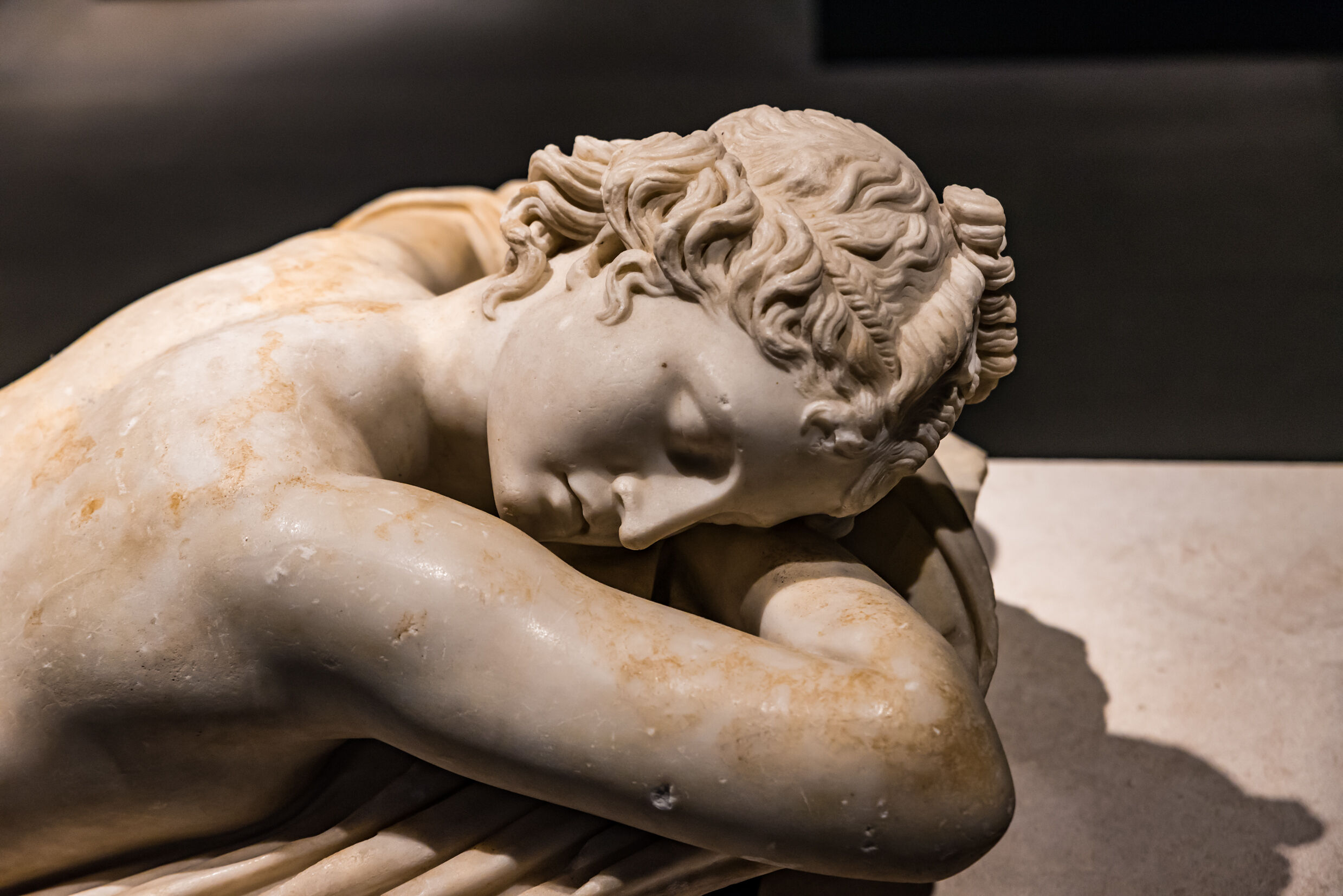Policing real people’s genders isn’t enough anymore, apparently. Now, folks have turned to critiquing the hypothetical gender identity of an ancient Roman statue.
The statue, called The Sleeping Hermaphroditus, depicts the Greek god Hermaphroditus — aka, the original binary-breaking icon. In Greek myth, Hermaphroditus was the son of Aphrodite and Hermes who had both male and female characteristics, typically depicted with a feminine body and male genitals.
The statue is no exception: from behind, it looks like any other Roman statue of a voluptuous woman, but a glimpse at its crotch reveals that it also has a penis. The Sleeping Hermaphroditus is currently on display at the Louvre in Paris, where X user @Waffeul_ saw the statue in person.
Entertainment with an edge
Whether you’re into indie comics, groundbreaking music, or queer cinema, we’re here to keep you in the loop twice a week.
“Went to the museum and saw the original transsexual there,” they wrote alongside two images of the statue. The post immediately caught the attention of trans folks across the internet — some who related to Hermaphroditus’ sleeping position, and some who were excited to see an example of queerness from the ancient world.
If I found this when I went at 16 I would have been fixed
— Kaylen (@Kaymation) April 7, 2024
literally me when i’m sleeping
— Riley🌸 (@rileyjamjam) April 6, 2024
But others pointed out that Hermaphroditus is traditionally considered to be an intersex man, not a transgender woman, and putting the label “transsexual” on the statue is erasing the already underrepresented intersex community.
“I know we all want more historical/mythological trans representation but we can’t misgender intersex folk and steal their representation in order to do so,” wrote one user. “Hermaphroditus was an intersex man, not transsexual. Listen to intersex people. Don’t erase them.”
Oooh that's Hermaphrodite, at the Louvres, a sculpture of the mythological character, who's both male and female (complicated story). So sorry to it ain't really a transsexual, it would rather be the original intersex.
— YourComfortTiny (@YourComfortTiny) April 7, 2024
But others thought that insisting trans people not identify with the statue was, in turn, invalidating of trans identity.
“Getting offended at this […] doesn’t feel like a brave defense of intersex people as much as it feels like you think it’s insulting for even a statue to be compared to a transsexual woman,” one commenter wrote.
Ultimately, Hermaphroditus isn’t a one-to-one portrayal of either an intersex person or a transgender person. Firstly, his gender presentation is the result of a nymph’s curse, so the story doesn’t exactly line up with either identity.
Beyond that, the ancient Greeks and Romans didn’t conceive of gender and sex the way modern society does, so trying to stake a claim on the statue in one direction or the other is pretty tricky. Either way, The Sleeping Hermaphroditus is a gorgeous depiction of ancient queerness. Whether intersex, trans, or both, we’ve always been here.
Related:
Every Body Offers a Glimpse Into Intersex Lives
Directed by Julie Cohen, the film documents the diary entries of three activists advocating for Intersex rights.
Why is the U.S. lagging behind on intersex rights?
Meet the intersex activists who are challenging the establishment
Don't forget to share:
Help make sure LGBTQ+ stories are being told...
We can't rely on mainstream media to tell our stories. That's why we don't lock our articles behind a paywall. Will you support our mission with a contribution today?
Cancel anytime · Proudly LGBTQ+ owned and operated
Read More in Entertainment
The Latest on INTO
Subscribe to get a twice-weekly dose of queer news, updates, and insights from the INTO team.
in Your Inbox















